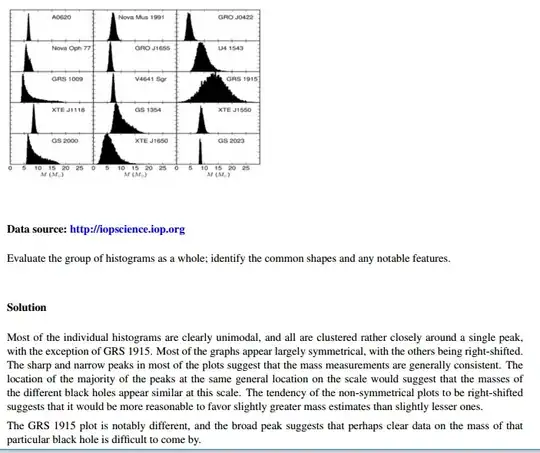I'm trying to learn statistics on my own and currently taking an online class through edX. Unfortunately some things are not clearly explained. The online book used for this class contains the following problem and explanation
I'm not clear about the following statement:
The tendency of the non-symmetrical plots to be right-shifted (If the right side of the data is spread out across a wider area then this type of distribution is referred to as skewed right) suggests that it would be more reasonable to favor slightly greater mass estimates than slightly lesser ones.
I can't understand why we would want to favor slightly greater mass? We have less measurements that tell us that mass is large. Since most of the measurements are concentrated around one value, why can't I say that this value is my most likely mass.
Any help is appreciated.
